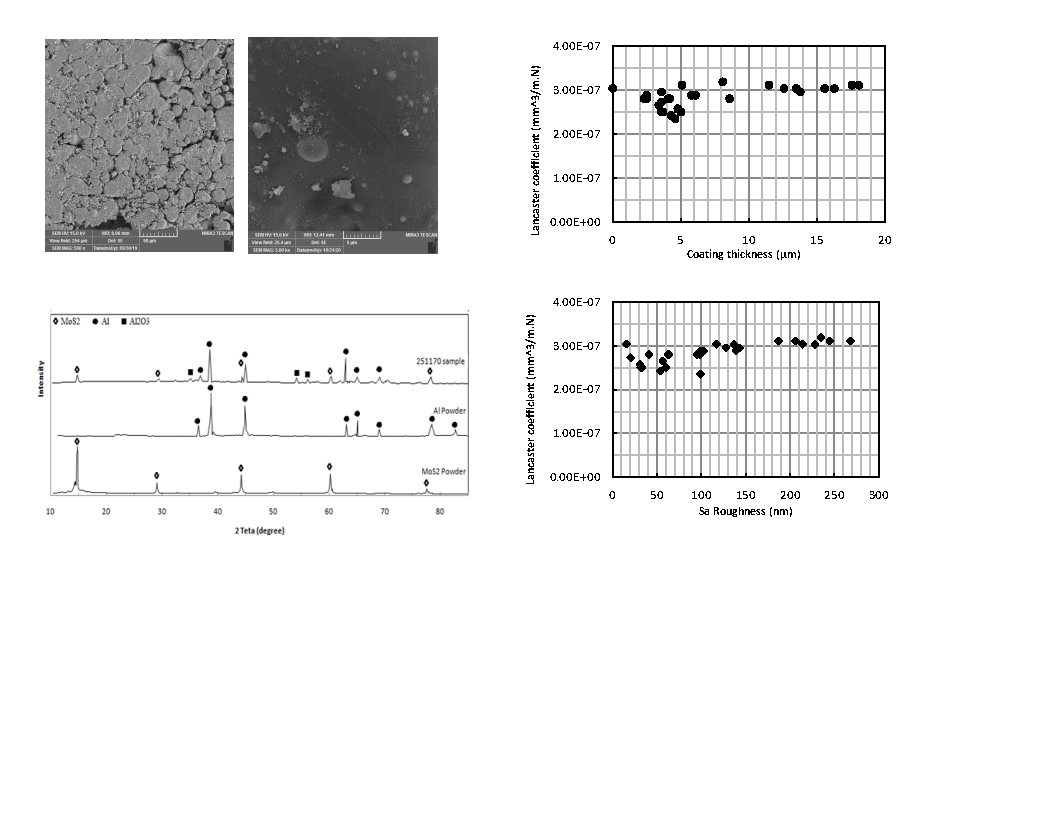Volume 19, Issue 3 (September 2022)
IJMSE 2022, 19(3): 55-74 |
Back to browse issues page
Abstract: (9107 Views)
This study investigates the synthesis of Al/MoS2 nanocomposite coating by the electro spark deposition (ESD) method for its lubricating properties. ESD method was selected because it is a very easy, rapid, and cost-saving method and the resulting coating has a strong bonding with the substrate. As a substrate, a Ti-6Al-4V alloy sheet containing 6.12 % Al, 4.06 % V, 0.19% Fe, and 0.05 % Ni was used. For coating, an aluminum-molybdenum disulfide composite electrode in the form of a cylindrical rod was employed. Three frequencies of 5, 8, and 11 kHz, three current limits of 15, 25, and 35 amps, and three duty cycles of 50, 60, and 70% were used in the coating operation. AFM analysis was used to study the topography, morphology, and calculate roughness. The samples were then subjected to hardness tests. To determine the wear resistance of the samples, pin on disk tests were performed. XRD analysis was performed to identify the phases on the surface of the coated samples. SEM was used to examine the microstructure of the coating before and after wear testing, in order to determine the wear mechanism. The results indicated that the Al/MoS2 nanocomposite coating was synthesized on the substrate surface. The hardness of the reference sample is 353 Vickers, and that of the coated samples is about 200 Vickers. For the reference sample, the roughness was measured at 15.7 nm, and for the coated sample at 268.1 nm. As spark energy increased, the coefficient of friction increased by approximately 0.09. As spark energy increased, the wear rate increased by 27%. A significant increase in the Lancaster coefficient occurred around 5 joules of energy. According to the wear rate results, the sample with the lowest thickness wears 4% less than the sample with the highest thickness. The wear rate of sample 351170 is 78% lower than that of sample 150550.
Type of Study: Research Paper |
Subject:
Coatings and Corrosion Phenomenon
| Rights and permissions | |
 |
This work is licensed under a Creative Commons Attribution-NonCommercial 4.0 International License. |




